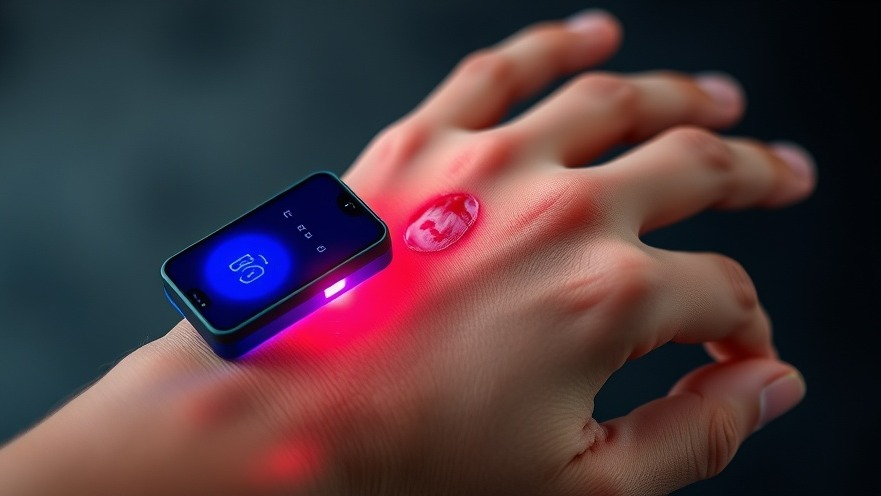
Revolutionizing Wound Care with AI and Bioelectronics
In a groundbreaking development, researchers from the University of California, Santa Cruz (UCSC) have unveiled a wearable device known as "a-Heal," designed to transform the wound healing process. This innovative system seamlessly integrates artificial intelligence (AI) and bioelectronics to provide tailored treatments during key phases of wound healing. Equipped with an onboard camera, a bioelectronic actuator, and machine learning algorithms, the a-Heal device adapts to the patient's unique healing journey while streamlining wounds' healing stages—clotting, immune response, scabbing, and scarring.
Understanding the Technology Behind a-Heal
At the core of the a-Heal device lies its ability to monitor wounds with precision. Every two hours, the integrated camera captures images of the healing site, which are then analyzed by what the researchers refer to as the "AI physician." This machine learning model identifies the healing stage of the wound, notifying on necessary treatments when healing appears to lag. This process reflects a significant advancement in personalized medicine, allowing practitioners to optimize outcomes in real-time.
The Impact of Wireless and Portable Technology
One of the most notable advantages of the a-Heal device is its portability. It’s designed for easy use, making wound therapy more accessible for patients in remote areas or those with limited mobility. This accessibility aligns with the broader movement in healthcare towards telemedicine and home-based care, demonstrating a shift in where and how patients receive treatment.
Insights on Wound Healing and Patient Care
Research shows that expedited wound healing significantly enhances patient outcomes, reducing complications and improving overall quality of life. Traditional methods often rely on periodic medical visits for assessment and treatment adjustments. In contrast, the a-Heal device’s continuous monitoring facilitates timely interventions, ensuring that patients receive the most appropriate care without frequent trips to a healthcare facility. Studies linked proactive treatment with lower rates of infection and scarring, emphasizing the device’s potential utility in clinical settings.
How AI Plays a Pivotal Role
The role of AI in healthcare continues to expand, with a-Heal exemplifying its application in real-time patient monitoring. By predicting potential setbacks through trend analysis, the device not only diagnoses but also suggests treatments, including the application of a topical medication—fluoxetine— and electric fields to enhance wound healing. This dual therapy approach showcases a breakthrough in harnessing technology to boost healing processes.
Future Predictions: A New Era in Wound Management
As healthcare increasingly embraces digital transformation, the a-Heal device stands at the forefront of future wound care innovations. Predictions indicate a growing trend toward personalized treatment plans powered by AI, ensuring that patient care will be data-driven and highly tailored. This shift could foster a new era where remote monitoring systems like a-Heal become standard in managing chronic wounds or post-surgical care.
Challenges Ahead: Integration and Adoption
Despite the potential benefits, there are challenges to overcome. The integration of such advanced technologies into existing healthcare practices requires training for healthcare professionals and the establishment of protocols that assure patient safety. There might be hesitance from practitioners to adopt device-driven care, primarily due to unfamiliarity with the technology. However, continuous education and demonstrable results can mitigate these concerns.
Conclusion: Embracing Technological Advancements in Patient Care
The a-Heal device represents a significant milestone in the evolution of wound care, merging bioelectronics and AI to optimize healing trajectories. This innovation not only has the potential to enhance patient outcomes significantly but also calls on healthcare practitioners to embrace and integrate these advancements into their practices. By staying informed about emerging technologies, healthcare providers can be better equipped to incorporate these innovations into their patient care methodologies.
Understanding such transformative devices is essential for health practitioners aiming to stay at the forefront of medical advancements. Embrace the future of wound care.
 Add Row
Add Row  Add
Add 




Write A Comment